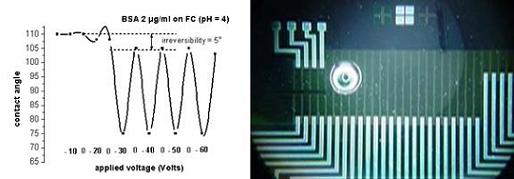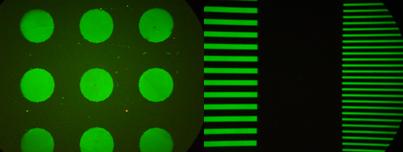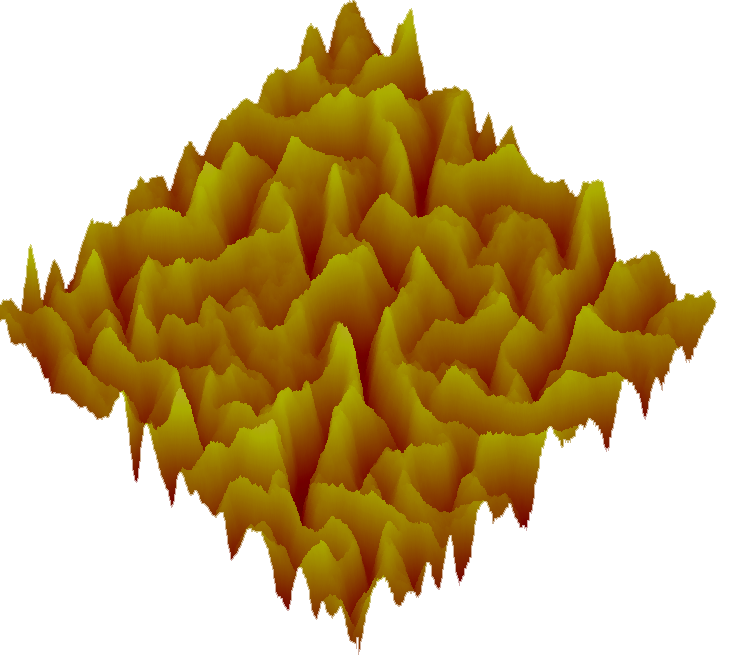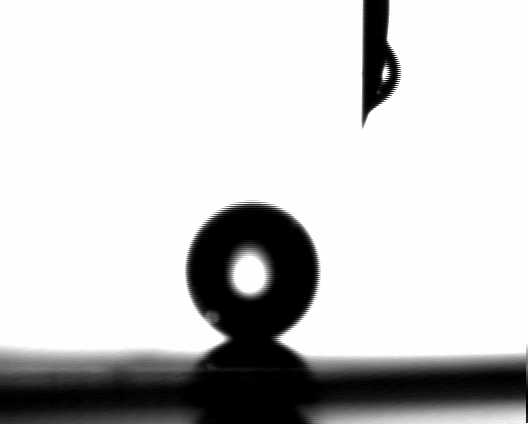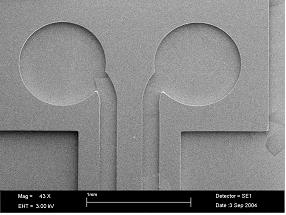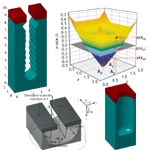 |
|
Micro-fabrication for life sciences Microfabrication technology, i.e. the engineering of micron- and sub-micron-sized features on the surface of various materials, has recently expanded from microelectronics and micro-mechanics into new areas like biology, medicine and healthcare. These emerging applications require, among others, the development of novel fabrication routes for micro and nanostructures on a variety of materials ranging from the traditional silicon and glass to more commercially interesting materials such as polymers/plastics. In this field, current activities of our group focus mainly on three areas: - The fabrication of microfluidics on plastic substrates using plasma technology (N.Vourdas et al. ISPC 2005, M.E. Vlachopoulou et. al. MNE 2006, Misiakos et. al. SPIE 2006) We fabricate microfluidic devices on PMMA and
PDMS substrates by fast plasma etching. The influence of the plasma
on the topography and chemistry of surfaces and their effect on
the function of the device is also investigated. Bonding techniques
are developed to complement the fabrication technology of plastic
devices.
Watch the Electrokinetics in plasma etched PMMA microfluidics video.
Liquid transport in microfluidics is investigated by means of methods, such as electrowetting, not requiring the use of moving parts. Electrowetting in particular is being studied as a potential route for bio-fluid transport on digital microfluidics.
High density micro-arrays are fabricated by means of hydrophilic /hydrophobic patterning and chemical modification of surfaces in plasmas. The proposed fabrication route is fast and easy, while the obtained micro-arrays are also characterised by high signal to noise ratio.
|
|

